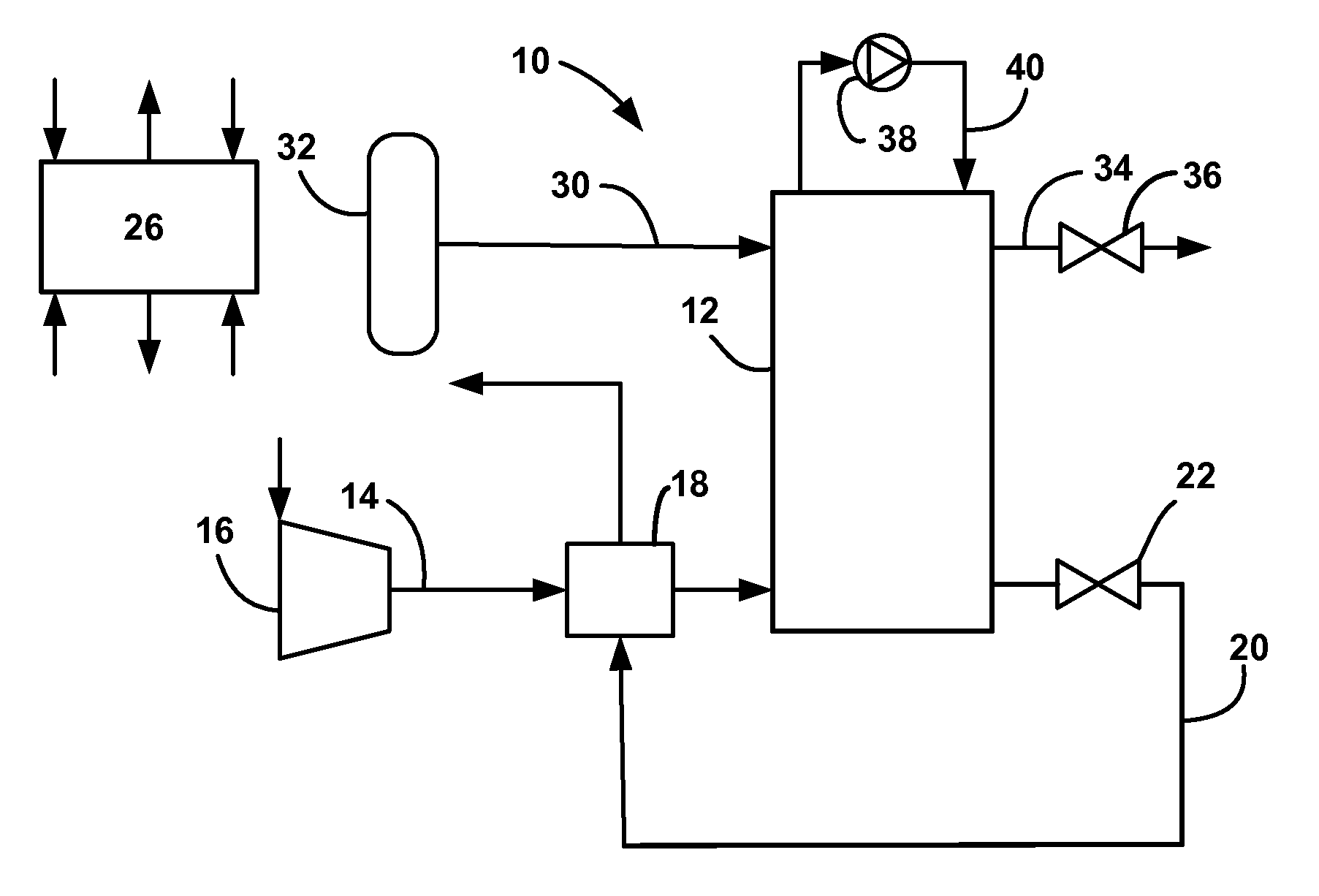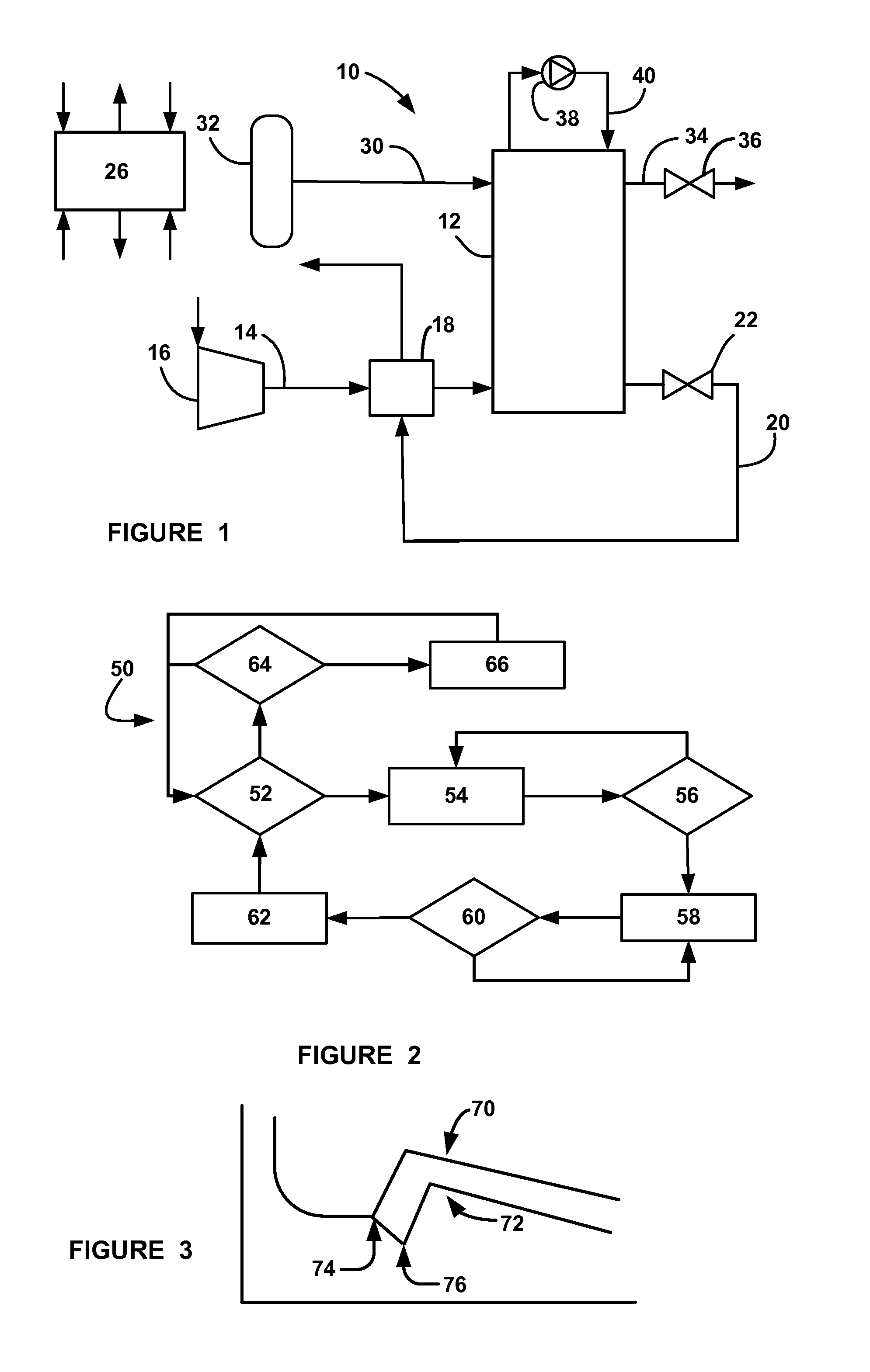Vehicle application for air storage cathode carbon loss estimation
a technology for air storage cathode and fuel cell stack, which is applied in the direction of transportation hydrogen technology, electrical generators, design optimisation/simulation, etc., can solve the problems of affecting stack stability, affecting stack stability, and accumulating water in the reactant gas flow channel, and is particularly troublesome at low stack output load
- Summary
- Abstract
- Description
- Claims
- Application Information
AI Technical Summary
Benefits of technology
Problems solved by technology
Method used
Image
Examples
Embodiment Construction
[0016]The following discussion of the embodiments of the invention directed to a system and method for estimating carbon loss in a fuel cell stack of a fuel cell system is merely exemplary in nature, and is in no way intended to limit the invention or its applications or uses.
[0017]FIG. 1 is a schematic block diagram of a fuel cell system 10 including a fuel cell stack 12. A compressor 16 provides an airflow to the cathode side of the fuel cell stack 12 on a cathode input line 14 through a water vapor transfer (WVT) unit 18 that humidifies the cathode input air. The WVT unit 18 is one type of applicable humidification device, where other types of humidification devices may be applicable for humidifying the cathode inlet air, such as enthalpy wheels, evaporators, etc. A cathode exhaust gas is output from the stack 12 on a cathode exhaust gas line 20 through a back-pressure valve 22. The exhaust gas line 20 directs the cathode exhaust to the WVT unit 18 to provide the humidity to humi...
PUM
| Property | Measurement | Unit |
|---|---|---|
| concentration | aaaaa | aaaaa |
| gas concentration model | aaaaa | aaaaa |
| temperature | aaaaa | aaaaa |
Abstract
Description
Claims
Application Information
 Login to View More
Login to View More - R&D
- Intellectual Property
- Life Sciences
- Materials
- Tech Scout
- Unparalleled Data Quality
- Higher Quality Content
- 60% Fewer Hallucinations
Browse by: Latest US Patents, China's latest patents, Technical Efficacy Thesaurus, Application Domain, Technology Topic, Popular Technical Reports.
© 2025 PatSnap. All rights reserved.Legal|Privacy policy|Modern Slavery Act Transparency Statement|Sitemap|About US| Contact US: help@patsnap.com



